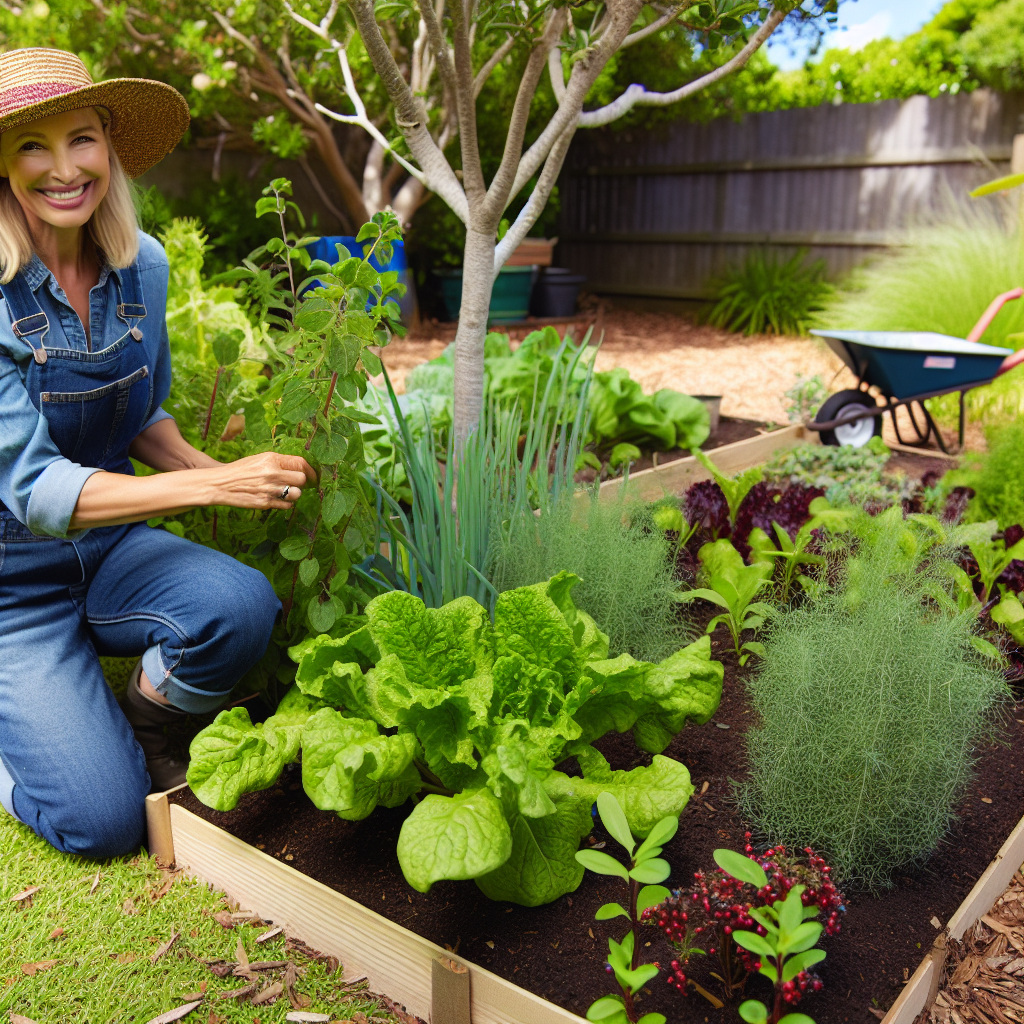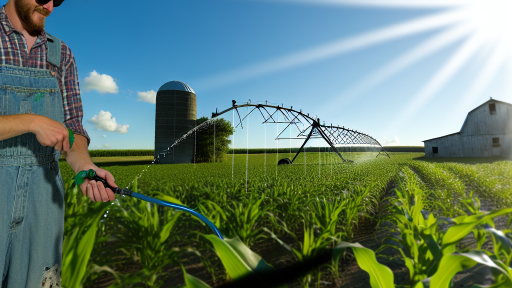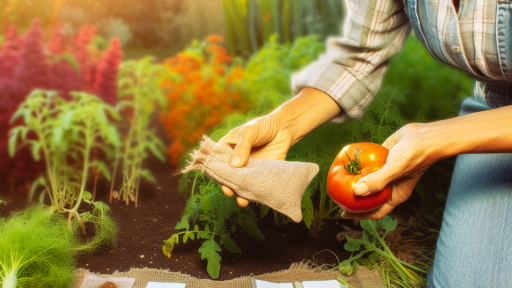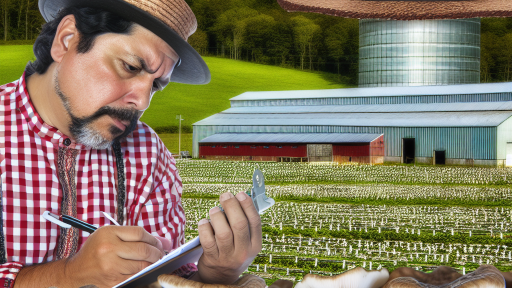Introduction to Low-Maintenance Edible Landscaping
Low-maintenance edible landscaping combines beauty with functionality.
This approach allows you to enjoy fresh food with minimal effort.
Many homeowners seek to reduce their yard work while maximizing produce.
Edible landscaping creates aesthetically pleasing gardens full of life.
It eliminates the need for traditional vegetable gardens that require constant care.
Benefits of Low-Maintenance Edible Landscaping
One significant advantage is the reduced time spent on upkeep.
Moreover, it provides a sustainable source of fresh produce.
Additionally, these gardens can enhance property value.
The beauty of edible plants can attract pollinators and beneficial wildlife.
Ultimately, this approach promotes healthier eating habits.
Key Principles for Success
Start by selecting the right plants for your environment.
Consider climate, soil type, and sunlight exposure during plant selection.
Group plants according to their watering needs to simplify care.
Utilize mulch to suppress weeds and retain soil moisture.
Incorporating perennials reduces the need for replanting each year.
Transform Your Agribusiness
Unlock your farm's potential with expert advice tailored to your needs. Get actionable steps that drive real results.
Get StartedPlant Varieties to Consider
Fruit trees provide shade and delicious fruits for years to come.
Berry bushes offer easy-to-harvest snacks throughout the season.
Herbs can thrive in small spaces and enhance your culinary dishes.
Edible flowers not only beautify gardens but are also nutritious.
Root vegetables can be planted and largely forgotten until harvest.
Benefits of Low-Maintenance Edible Plants
Time and Effort Savings
Low-maintenance edible plants allow gardeners to save time.
They require less frequent watering and pruning.
This feature makes gardening more enjoyable and less stressful.
As a result, you can focus on harvesting and enjoying your crops.
Environmental Benefits
These plants support local ecosystems effectively.
By choosing native or adaptable varieties, you encourage biodiversity.
The reduced need for chemical fertilizers helps maintain soil health.
Additionally, low-maintenance plants often require less water.
Cost-Effectiveness
Low-maintenance edibles can save you money in the long run.
Fewer resources are needed for care, resulting in lower costs.
Moreover, growing your food reduces grocery bills.
In fact, homegrown produce can be fresher and healthier.
Versatile Aesthetics
These plants offer beauty in addition to functionality.
Colorful fruits and fragrant herbs can enhance any landscape.
Even during off-seasons, the structures remain visually appealing.
They can complement traditional ornamental plants effortlessly.
Health Benefits
Growing your food encourages a healthier lifestyle.
You’re more likely to consume fresh fruits and vegetables.
Low-maintenance plants often include nutritious options.
Showcase Your Farming Business
Publish your professional farming services profile on our blog for a one-time fee of $200 and reach a dedicated audience of farmers and agribusiness owners.
Publish Your ProfileThis accessibility supports better dietary choices overall.
Top Low-Maintenance Edible Plants for Beginners
Herbs for Easy Gardening
Herbs are excellent choices for low-maintenance gardening.
They require minimal care and thrive in various environments.
Consider planting basil, which grows quickly and provides a fresh flavor.
Chives are also great, as they return each year.
Parsley is another herb that adds beauty and taste to your garden.
Vegetables That Don’t Demand Much
Many vegetables are surprisingly low-maintenance.
For instance, cherry tomatoes are easy to grow and reward you with abundant fruit.
Snap peas grow quickly and are perfect for snacking.
Radishes mature fast and need little attention.
All these options make them suitable for busy gardeners.
Fruits That Flourish with Minimal Effort
Even fruits can be part of a low-maintenance edible landscape.
Strawberries can be grown in pots or beds with minimal fuss.
Raspberries produce delicious berries with little upkeep.
Serviceberries are forgiving and attractive in any garden.
These fruits thrive with proper placement and regular watering.
Perennial Plants That Keep Giving
Perennial plants save time and effort in the long run.
Asparagus is a prime example; it regrows each year without replanting.
Rhubarb also provides reliable harvests for years.
Both plants offer culinary versatility with minimal care.
Ground Covers for Aesthetic Appeal
Ground covers can enhance your edible landscape.
Consider using creeping thyme, which produces aromatic foliage.
It makes for a beautiful lawn alternative and is drought tolerant.
Chamomile is another excellent ground cover, adding visual charm.
This plant produces flowers that are perfect for teas.
See Related Content: Organic Techniques for Growing Mushrooms Sustainably
Designing Your Landscape with Edible Plants
Choosing the Right Edible Plants
Start by selecting plants that thrive in your local climate.
Consider using native plants for better resilience and lower maintenance.
Focus on varieties that suit your taste and cooking preferences.
Herbs, vegetables, and fruits can all play a role in your design.
Plan for a mix of perennial and annual plants to ensure continuous harvests.
Creating Layers for Aesthetic Appeal
Utilize vertical space by planting climbing vegetables like peas and beans.
Incorporate ground covers, such as strawberries, for both beauty and function.
Arrange plants in a tiered manner to enhance visual interest.
Use taller plants at the back and shorter ones in the front for a balanced look.
Incorporating Pathways and Borders
Design pathways to make accessing your edible plants easy.
Use gravel, mulch, or stepping stones for a natural feel.
Define borders with herbs like lavender or rosemary for fragrance and charm.
Think about color and texture to create an inviting space.
Implementing Companion Planting
Pair compatible plants to enhance growth and deter pests.
Showcase Your Farming Business
Publish your professional farming services profile on our blog for a one-time fee of $200 and reach a dedicated audience of farmers and agribusiness owners.
Publish Your ProfileFor example, plant tomatoes with basil for improved flavor and health.
Consider using marigolds to protect your garden from harmful insects.
Employ companion planting for a naturally balanced ecosystem.
Utilizing Container Gardening
Container gardening offers flexibility for small spaces and patios.
Choose pots that suit the size of your edible plants.
Use self-watering containers to minimize maintenance needs.
Bring a pop of color to your landscape with painted or textured pots.
Maintaining Your Edible Landscape
Emphasize easy-care plants to simplify maintenance routines.
Regularly mulch to retain moisture and suppress weeds.
Implement drip irrigation systems to ensure efficient watering.
Observe plant health to catch any issues early on.
Learn More: Getting Started with Hydroponic Farming
Integrating Perennials for Year-Round Harvest
Benefits of Perennial Edibles
Perennial edibles provide consistent food sources each year.
They significantly reduce the need for replanting annually.
Moreover, they promote soil health through deep root systems.
These plants contribute to biodiversity in your garden.
Choosing the Right Perennials
Start with selecting perennials suited for your climate zone.
Consider native species as they adapt better to local conditions.
Popular choices include asparagus, rhubarb, and certain herbs.
Furthermore, select fruit-bearing plants like blueberries and elderberries.
Herbs and Greens
Herbs like chives, oregano, and mint are low-maintenance choices.
They add flavors to dishes while thriving year after year.
Perennial greens like sorrel and Egyptian walking onion also work well.
Fruit and Vegetables
Strawberries and raspberries are delectable perennial fruits.
Establishing a small orchard with apple or pear trees can be rewarding.
In addition, consider planting artichokes and perennial peas for variety.
Designing Your Space
Plan your garden layout to maximize sun exposure.
Group perennials according to their water and light needs.
Consider creating raised beds for better drainage and aesthetics.
Maintaining Your Perennial Garden
Monitor your plants for pests and diseases regularly.
Implement mulching to suppress weeds and retain moisture.
Additionally, fertilize with organic matter to boost growth.
Harvesting Techniques
Learn the proper timing for harvesting each type of perennial.
Use sharp tools to avoid damaging the plant during harvest.
Lastly, preserve excess produce through canning or freezing.
Explore Further: Choosing the Right Hydroponic Equipment
Water-Efficient Landscaping Techniques
Choosing Drought-Resistant Plants
Selecting drought-resistant plants increases water efficiency in your landscape.
Consider native species that thrive in your local climate.
These plants require less water and maintenance.
Examples include lavender, succulents, and certain grasses.
Showcase Your Farming Business
Publish your professional farming services profile on our blog for a one-time fee of $200 and reach a dedicated audience of farmers and agribusiness owners.
Publish Your ProfileImplementing Xeriscaping Principles
Xeriscaping utilizes design techniques to minimize water use.
Begin by grouping plants with similar water needs.
This approach reduces overall irrigation demands.
Incorporate mulch to retain soil moisture.
Designing Efficient Irrigation Systems
Installing a drip irrigation system maximizes water efficiency.
It delivers water directly to the plant roots.
Consider using rain barrels to collect runoff.
These practices help conserve water while supporting plant health.
Creating Smart Landscape Layouts
Design your layout to enhance natural water drainage.
Incorporate contoured beds that direct rainwater to plants.
Additionally, create shaded areas to reduce evaporation.
Use hardscaping elements like stones to help absorb rainwater.
Maintaining Healthy Soils
Investing in healthy soil boosts water retention capabilities.
Add organic matter to enrich and aerate the soil.
Composting kitchen scraps and yard waste contributes to soil health.
Healthy soils reduce the need for additional watering.
Uncover the Details: Creating a Food-Producing Garden Farm

Using Mulch and Ground Covers to Reduce Weeds
The Benefits of Mulch
Mulch acts as a protective layer over soil.
It helps retain moisture and regulate temperature.
Moreover, mulch suppresses weed growth effectively.
Using organic mulch adds nutrients as it decomposes.
Therefore, it not only protects but also enriches the soil.
Choosing the Right Mulch
Different types of mulch serve various purposes.
Wood chips are long-lasting and suitable for perennial gardens.
Straw is lightweight and great for vegetable patches.
Grass clippings are rich in nitrogen and easy to source.
Research local options to find the best fit for your garden.
Implementing Ground Covers
Ground covers can also be effective in controlling weeds.
These plants spread quickly and cover bare soil.
Some edible varieties include clover and creeping thyme.
They offer additional benefits, such as attracting pollinators.
Consider the growth habits of ground covers when planting.
Maintaining Your Mulch and Ground Covers
Regular maintenance is crucial for effective weed control.
Replenish mulch layers annually to maintain effectiveness.
Monitor ground covers to prevent overcrowding of desired plants.
Adjust water and sunlight to encourage healthy growth.
Incorporate organic fertilizers to promote lush ground cover.
Creating a Sustainable Edible Ecosystem
Understanding the Basics
Creating a sustainable edible ecosystem begins with thoughtful planning.
Choose plants that thrive together in the same environment.
Consider local climate conditions when making decisions.
Showcase Your Farming Business
Publish your professional farming services profile on our blog for a one-time fee of $200 and reach a dedicated audience of farmers and agribusiness owners.
Publish Your ProfileNative plants typically require less maintenance and resources.
Selecting the Right Plants
Begin by selecting perennial plants for less frequent replanting.
Herbs like sage and thyme can thrive with minimal care.
Fruit bushes such as blueberries enhance both aesthetics and functionality.
Mix flowering plants with vegetables to attract pollinators.
Companion planting helps manage pests naturally.
Utilizing Vertical Space
Vertical gardening maximizes limited space effectively.
Install trellises for climbing plants like beans and cucumbers.
Choose wall-mounted planters for herbs and small veggies.
Utilizing vertical space increases your yield without added ground area.
Implementing Crop Rotation
Crop rotation protects soil health and productivity over time.
Rotate crops to prevent nutrient depletion and pest accumulation.
This method reduces the need for chemical fertilizers.
Moreover, it increases biodiversity in the garden ecosystem.
Incorporating Mulching Techniques
Mulching is vital for retaining soil moisture and temperature stability.
Organic mulch, such as straw or wood chips, enriches soil as it decomposes.
Additionally, mulch suppresses weed growth effectively.
Creating a Water Management System
Implementing a rainwater harvesting system conserves water resources.
Using drip irrigation reduces water waste drastically.
Monitor soil moisture to prevent overwatering and encourage deep root growth.
Implementing Pest Management Strategies
Pest management is crucial for maintaining a healthy ecosystem.
Introduce beneficial insects, such as ladybugs, to control pests.
Plant aromatic herbs to repel unwanted insects naturally.
Regularly monitor plants for early signs of distress.
Engaging the Community
Engaging your community enhances the edible landscape experience.
Consider organizing local gardening workshops for knowledge sharing.
Create a neighborhood garden space to foster collaboration.
Community involvement supports the maintenance of these ecosystems.
Minimalist Approaches to Edible Gardening
Choosing the Right Plants
Start by selecting low-maintenance plants for your garden.
Consider varieties that require minimal care and watering.
Examples include herbs, leafy greens, and perennial vegetables.
Additionally, native plants thrive in local conditions.
Creating a Simple Layout
Design your garden layout with simplicity in mind.
Use raised beds or container gardens to reduce maintenance.
Plan for easy access when harvesting and caring for plants.
Incorporate pathways to facilitate movement through the garden.
Using Efficient Watering Techniques
Implement drip irrigation systems for efficient watering.
This method delivers water directly to plant roots.
Consider rainwater harvesting to reduce utility costs.
Mulch your garden beds to help retain soil moisture.
Showcase Your Farming Business
Publish your professional farming services profile on our blog for a one-time fee of $200 and reach a dedicated audience of farmers and agribusiness owners.
Publish Your ProfileEmphasizing Companion Planting
Utilize companion planting to enhance growth and reduce pests.
Pair plants that benefit each other, such as tomatoes and basil.
This approach fosters a healthier garden ecosystem.
Moreover, it can boost your overall yield with less effort.
Incorporating Edibles into Existing Landscapes
Combine ornamental plants with edible varieties for beauty and function.
Choose flowering herbs that attract beneficial insects.
Integrate fruiting plants like blueberries and strawberries into borders.
This integration adds visual appeal while producing food.
Adopting No-Dig Gardening Techniques
No-dig gardening minimizes disturbance to the soil ecosystem.
Layer organic materials to create fertile planting areas.
This method improves soil health and reduces labor.
It also preserves the natural microbial life in the soil.
Maintaining Minimal Weeds
Implement ground covers or plant densely to suppress weeds.
Regularly monitor and remove weeds by hand as needed.
Using mulch also helps in preventing weed growth.
Consistent maintenance keeps your garden tidy with minimal effort.
Maintaining Your Low-Maintenance Edible Landscape
Routine Care and Monitoring
Regular maintenance keeps your edible landscape thriving.
Check for pests and diseases periodically.
Inspect your plants for any signs of distress.
This proactive approach helps you address issues early.
Watering Techniques
Efficient watering is crucial for low-maintenance landscaping.
Use drip irrigation systems for consistent moisture.
Water early in the morning to minimize evaporation.
Consider rainwater harvesting systems for sustainability.
Soil Management
Healthy soil promotes robust plant growth.
Test your soil’s pH and nutrient levels regularly.
Incorporate organic matter to enhance soil quality.
This practice supports long-term plant health.
Mulching Strategies
Mulching significantly reduces maintenance efforts.
Apply organic mulch to suppress weeds effectively.
This layer helps retain soil moisture during dry spells.
Choose materials like wood chips or straw for best results.
Seasonal Adjustments
Adapting your landscape to seasonal changes is essential.
Plant perennials to minimize replanting efforts.
Group plants based on their seasonal needs for easier care.
This method encourages a natural ecosystem balance.
Harvesting with Ease
Timely harvesting boosts your garden’s productivity.
Utilize containers for easier access to your crops.
Regularly check for ripe fruits and vegetables.
This promotes continual plant vitality and yield.
Showcase Your Farming Business
Publish your professional farming services profile on our blog for a one-time fee of $200 and reach a dedicated audience of farmers and agribusiness owners.
Publish Your ProfileUtilizing Companion Planting
Companion planting helps reduce pest issues.
Grow plants that complement each other’s growth.
This strategy supports overall garden health and yields.
Examples include tomatoes with basil or carrots with onions.
Additional Resources
Foodscaping | How to Create an Edible Landscape | joe gardener®
Vegetables — Know-How for the Edible Garden, Vegetable Garden …




